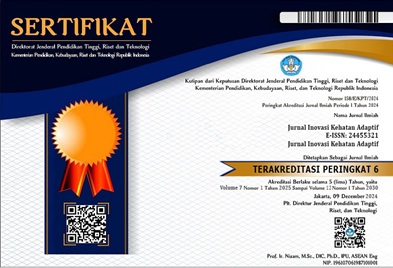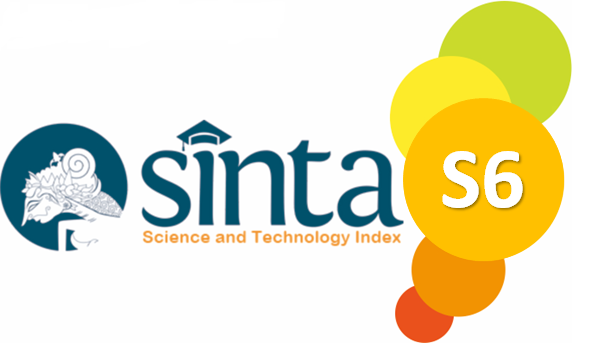PROFIL PENGGUNAAN OBAT ANTIEMETIK ODANSENTRON DALAM MENCEGAH PONV PADA PASIEN BEDAH ORTHOPEDI DI RSUD KOTA SALATIGA
Kata Kunci:
PONV, Ondansentron, OrthopedicsAbstrak
Latar Belakang: Mual dan muntah pasca operasi (PONV) merupakan komplikasi yang umum terjadi pada pasien bedah ortopedi, yang dapat mempengaruhi pemulihan dan kepuasan pasien. Ondansetron, sebagai obat antiemetik, telah banyak digunakan untuk mencegah PONV. Metode: Penelitian ini bertujuan untuk menganalisis profil pengguna ondansetron dalam konteks pencegahan PONV pada pasien bedah ortopedi di RSUD Kota Salatiga. Penelitian ini menggunakan desain observasional dengan pendekatan cross-sectional. Data dikumpulkan dari observasi pasien yang menjalani operasi ortopedi dan menerima ondansetron sebagai profilaksis PONV. Variabel yang dianalisis meliputi demografi pasien, jenis operasi, dosis ondansetron yang diberikan, serta kejadian PONV pasca operasi. Hasil: Dari 5 pasien yang diteliti, mayoritas adalah perempuan (60%) dengan rentang usia 20-80 tahun. Jenis operasi yang paling umum adalah orif (100%). Dosis ondansetron yang paling sering diberikan sebanyak 4mg. Hasil menunjukkan bahwa 80% pasien tidak mengalami PONV setelah operasi, menunjukkan efektivitas ondansetron dalam pencegahan mual dan muntah. Rekomendasi : Hasil penelitian ini sejalan dengan studi sebelumnya yang menunjukkan efektivitas ondansentron dalam mencegah PONV. Penggunaan ondansentron sebelum induksi anestesi terbukti mengurangi kejadian mual dan muntah pasca operasi. Selain itu, penelitian ini juga menyoroti pentingnya mempertimbangkan faktor-faktor individual pasien dalam manajemen PONV.
Background: Postoperative Nausea and Vomiting (PONV) is a common complication in orthopedic surgery patients, which can affect recovery and patient satisfaction. Ondansetron, as an antiemetic drug, has been widely used to prevent PONV. Methods: This study aimed to analyze the profile of ondansetron users in the context of PONV prevention in orthopedic surgery patients at Salatiga City Hospital. This study used an observational design with a cross-sectional approach. Data were collected from observations of patients who underwent orthopedic surgery and received ondansetron as PONV prophylaxis. The variables analyzed included patient demographics, type of surgery, the dose of ondansetron given, and the incidence of postoperative PONV. Results: Of the 5 patients studied, the majority were female (60%) with an age range of 20-80 years. The most common type of surgery was orif (100%). The most common dose of ondansetron given was 4mg. Results showed that 80% of patients did not experience PONV after surgery, demonstrating the effectiveness of ondansetron in the prevention of nausea and vomiting. Recommendation: The results of this study are in line with previous studies showing the effectiveness of ondansentron in preventing PONV. The use of ondansentron before induction of anesthesia was shown to reduce the incidence of postoperative nausea and vomiting. In addition, this study also highlights the importance of considering individual patient factors in PONV management.





